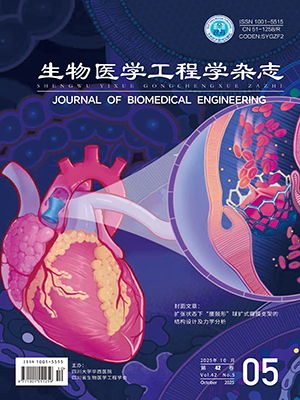| 1. |
Tham Y C, Li X, Wong T Y. Global prevalence of glaucoma and projections of glaucoma burden through 2040: a systematic review and meta-analysis. Ophthalmology, 2014, 121(11): 2081-2090.
|
| 2. |
刘伟, 邢小丽, 季健. 体位与眼压. 中华眼科杂志, 2015, 51(2): 146-150.
|
| 3. |
Weinreb R N, Khaw P T. Primary open-angle glaucoma. Lancet, 2004, 363: 1711-1720.
|
| 4. |
胡倩倩, 吴仁毅. 青光眼视神经保护的治疗现状及进展. 国际眼科杂志, 2014, 14(4): 633-636.
|
| 5. |
王雪梅, 曲超. 青光眼视神经损伤的发病机制及治疗研究最新进展. 眼科新进展, 2024, 44(7): 572-577.
|
| 6. |
Matlach J, Bender S, König J, et al. Investigation of intraocular pressure fluctuation as a risk factor of glaucoma progression. Clin Ophthalmol, 2019, 13: 9-16.
|
| 7. |
Zhang Nan, Wang Jiaxing, Li Ying, et al. Prevalence of primary open angle glaucoma in the last 20 years: a meta-analysis and systematic review. Sci Rep, 2021, 11(1): 13762.
|
| 8. |
Tamm E R. The trabecular meshwork outflow pathways: structural and functional aspects. Exp Eye Res, 2009, 88(4): 648-655.
|
| 9. |
Buffault J, Labbé A, Hamard P, et al. The trabecular meshwork: Structure, function and clinical implications. A review of the literature. J Fr Ophtalmol, 2020, 43(7): 217-230.
|
| 10. |
Hann C R, Fautsch M P. The elastin fiber system between and adjacent to collector channels in the human juxtacanalicular tissue. Invest Ophthalmol Vis Sci, 2011, 52(1): 45-50.
|
| 11. |
McEwen W K. Application of Poiseuille's law to aqueous outflow. AMA Arch Ophthalmol, 1958, 60(2): 290-294.
|
| 12. |
Kumar S, Acharya S, Beuerman R, et al. Numerical solution of ocular fluid dynamics in a rabbit eye: parametric effects. Ann Biomed Eng, 2006, 34(3): 530-544.
|
| 13. |
Villamarin A, Roy S, Hasballa R, et al. 3D simulation of the aqueous flow in the human eye. Med Eng Phys, 2012, 34(10): 1462-1470.
|
| 14. |
Martínez Sánchez G J, Pozo C E D, Medina J A R, et al. Numerical simulation of the aqueous humor flow in the eye drainage system; a healthy and pathological condition comparison. Med Eng Phys, 2020, 83: 82-92.
|
| 15. |
Overby D R, Stamer W D, Johnson M. The changing paradigm of outflow resistance generation: Towards synergistic models of the JCT and inner wall endothelium. Exp Eye Res, 2009, 88(4): 656-670.
|
| 16. |
Zhang Jing, Qian Xiuqing, Zhang Haixia, et al. Fluid-structure interaction simulation of aqueous outflow system in response to juxtacanalicular meshwork permeability changes with a two-way coupled method. CMES-Comp Model Eng, 2018, 116(2): 301-314.
|
| 17. |
Zhang Jing, Qian Xiuqing, Zhang Haixia, et al. Detailed 3D micro-modeling of rat aqueous drainage channels based on two-photon imaging: simulating aqueous humor through trabecular meshwork and Schlemm’s canal by two-way fluid structure interaction approach. Med Biol Eng Comput, 2022, 60(7): 1915-1927.
|
| 18. |
Strohmaier C A, Reitsamer H A, Kiel J W. Episcleral venous pressure and IOP responses to central electrical stimulation in the rat. Invest Ophthalmol Vis Sci, 2013, 54(10): 6860-6866.
|
| 19. |
Hashemi H, Kashi A H, Fotouhi A, et al. Distribution of intraocular pressure in healthy Iranian individuals: the Tehran Eye Study. Br J Ophthalmol, 2005, 89(6): 652-657.
|
| 20. |
黄颖, 邸悦, 乔彤. 豚鼠与人眼球结构及生物学参数的比较研究进展. 中国眼耳鼻喉科杂志, 2023, 23(2): 180-184.
|
| 21. |
Wang Wenjia, Qian Xiuqing, Song Hongfang, et al. Fluid and structure coupling analysis of the interaction between aqueous humor and iris. Biomed Eng Online, 2016, 15(Suppl 2): 569-586.
|
| 22. |
钱秀清, 宋红芳, 刘志成. 青光眼生物力学研究进展. 科技导报, 2018, 36(13): 30-38.
|
| 23. |
Mei Xi, Ren Lin, Xu Qiang, et al. Effect of persistent high intraocular pressure on microstructure and hydraulic permeability of trabecular meshwork. Chin Phys B, 2015, 24(5): 610-617.
|
| 24. |
Gerlach J C, Hentschel F, Spatkowski G, et al. Cell detachment during sinusoidal reperfusion after liver preservation: an in vitro model. Transplantation, 1997, 64(6): 907-912.
|
| 25. |
Doors M, Berendschot T T, Webers C A, et al. Model to predict endothelial cell loss after iris-fixated phakic intraocular lens implantation. Invest Ophthalmol Vis Sci, 2010, 51(2): 811-815.
|
| 26. |
Malek A M, Alper S L, Izumo S. Hemodynamic shear stress and its role in atherosclerosis. JAMA, 1999, 282(21): 2035-2042.
|
| 27. |
Byfield F J, Wen Q, Levental I, et al. Absence of filamin A prevents cells from responding to stiffness gradients on gels coated with collagen but not fibronectin. Biophys J, 2009, 96(12): 5095-5102.
|
| 28. |
Solon J, Levental I, Sengupta K, et al. Fibroblast adaptation and stiffness matching to soft elastic substrates. Biophys J, 2007, 93(12): 4453-4461.
|
| 29. |
张迪, 张海霞, 李林. 基于快速加卸载的单轴拉伸识别屈光术后兔角膜的生物力学特性. 生物医学工程学杂志, 2024, 41(1): 136-143.
|
| 30. |
王川, 董建鑫, 张静, 等. 大鼠小梁网组织压痕实验有限元模拟研究. 北京生物医学工程, 2022, 41(5): 454-457,464.
|
| 31. |
Vranka J A, Staverosky J A, Reddy A P, et al. Biomechanical rigidity and quantitative proteomics analysis of segmental regions of the trabecular meshwork at physiologic and elevated pressures. Invest Ophthalmol Vis Sci, 2018, 59(1): 246-259.
|
| 32. |
Karimi A, Khan S, Razaghi R, et al. Segmental biomechanics of the normal and glaucomatous human aqueous outflow pathway. Acta Biomaterialia, 2024, 173: 148-166.
|




